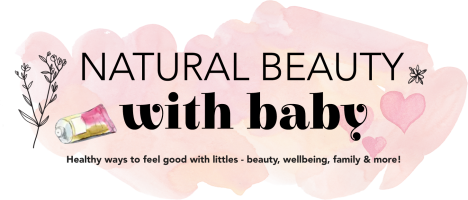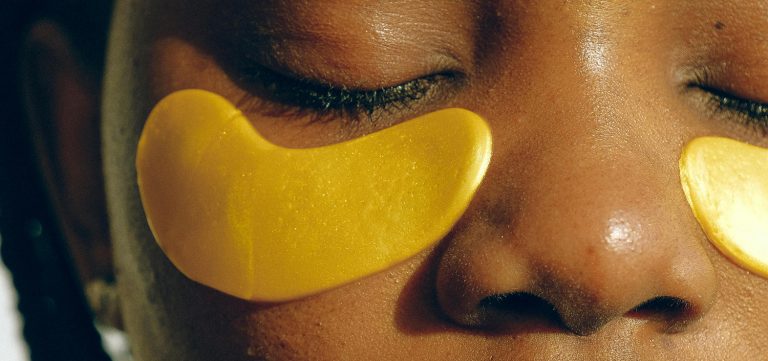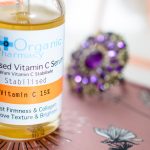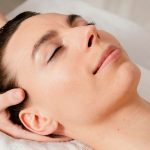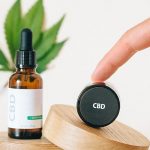“The top 9 facial skin complaints and how to treat them” is a collaborative post.
Acne, redness, and pigmentation can make our faces feel like a battleground of imperfections. It can feel like they are waging a war on our self-confidence.
We often scour the internet for the latest skincare tips. We seek miracle products or DIY remedies to defeat these facial foes. But, with an abundance of information out there, it’s hard to separate effective treatments from mere myths.
Read below to learn the top 9 facial skin complaints.
1. Dry and oily skin
Combating both dry and oily skin can feel like fighting a two-front war. This combination skin type is characterised by an oily T-zone (forehead, nose, and chin) and dryness in other areas, typically the cheeks.
Managing this duality needs a balanced skincare routine. It needs gentler, non-comedogenic moisturisers to hydrate without clogging pores. And it needs the right cleansers to remove excess sebum without stripping the skin’s natural moisture.
Regular exfoliation can help keep skin tone and texture even. But, it’s vital to be moderate to avoid worsening either condition. This can also mean hormonal imbalances.
So, consult a dermatologist to rule out any issues. They can also recommend specific products for your skin type.
2. Acne
Acne is perhaps the most common and troubling skin condition. It appears as pimples, blackheads, and cysts.
Clogged pores commonly cause it due to excess oil production, dead skin cells, and sometimes bacteria. While it predominantly affects teenagers due to hormonal changes, adults are not immune to its blemishes.
Acne treatment varies. It may include over-the-counter topical treatments containing benzoyl peroxide or salicylic acid. They aim to reduce oil and promote cell turnover.
A consistent, gentle skincare routine and a diet low in refined sugars might also help manage and prevent outbreaks.
3. Redness
One facial impurities that can be frustratingly difficult to cover up is redness caused by inflammation or dilation of blood vessels close to the skin’s surface. Many factors can trigger this, from sensitivities and allergies to stress and environmental aggressors.
A gentle skincare routine free of harsh chemicals and irritants is essential for managing this condition. Ingredients like aloe vera, chamomile, and green tea have anti-inflammatory properties that can soothe redness.
4. Dark spots and hyperpigmentation
Dark spots, also known as hyperpigmentation, are patches of skin that appear darker than the surrounding area. This results from an overproduction of melanin, the pigment responsible for skin color. Sun damage, hormonal fluctuations, or skin injuries can cause these facial impurities.
To reduce their appearance, avoid excessive sun exposure and wear sunscreen daily. Regular exfoliation can also help remove dead skin cells and promote cell turnover.
Certain ingredients like vitamin C, niacinamide, and retinoids may also aid in fading dark spots. A professional dermatologist can offer chemical peels or laser therapy treatments for more stubborn cases.
5. Fine lines and wrinkles
Fine lines and wrinkles are natural signs of ageing and can result from decreased skin elasticity and collagen breakdown. These signs commonly appear around the eyes, forehead, and mouth, which are most active in facial expressions.
Prolonged sun exposure can accelerate aging, so protection against UV rays with a high-SPF sunscreen is crucial. Skin hydration is also essential.
Look for moisturisers with hyaluronic acid or glycerin. They help skin retain water, making it look plumper.
Ingredients like retinol, peptides, and antioxidants can promote collagen production. They also fight free radicals that cause premature ageing.
6. Uneven skin tone
Facial impurities like acne scars, sun damage, and melasma can contribute to an uneven skin tone. While these marks are typically not harmful, they can be a source of self-consciousness.
Regular exfoliation with gentle scrubs or peels can remove dead skin cells. It also promotes cell turnover for a more even complexion. Ingredients like vitamin C, kojic acid, and retinoids are known to brighten and even out skin tone.
Avoid excessive sun exposure and always wear sunscreen, as UV rays can darken existing marks. Consult a dermatologist for professional treatments like laser therapy or microdermabrasion for stubborn or severe cases.
7. Under eye bags
Under-eye bags are a common concern, giving the appearance of puffiness or swelling in the tissues around the eyes. They are predominantly due to the accumulation of fluid or increased fat deposits in the under-eye area. Factors contributing to aging, lack of sleep, allergies, and genetics.
To alleviate under-eye bags, you can adopt several lifestyle changes. Ensure adequate rest, reduce salt intake to minimise water retention, and elevate the head during sleep to prevent fluid buildup. Cold compresses can also provide temporary relief by reducing swelling.
Skincare products for the under eye area contain caffeine, peptides, and hyaluronic acid. They can tighten skin and reduce puffiness. Cosmetic procedures, like fillers, laser therapy, or blepharoplasty, may provide better solutions. They can help with stubborn under-eye bags.
8. Enlarged pores
Enlarged pores are a common complaint, particularly for those with oily skin. They result from an overproduction of sebum and dead skin cells and can also be genetic. While pore size is primarily predetermined by genetics, there are steps one can take to minimize their appearance.
You need to exfoliate and cleanse often. This keeps pores clear of debris and prevents them from getting more significant. Retinoids can also help decrease the size of pores by regulating oil production.
Don’t use heavy, comedogenic products. They can clog pores. Always check product labels for “non-comedogenic” or “oil-free” claims. Professionals can also use treatments like chemical peels or laser therapy. These treatments can help tighten pores for a smoother look.
9. Dull complexion
A lack of radiance often characterises a dull complexion and appears as an overall sallow, tired-looking skin tone. Factors contributing to this condition include ageing, dehydration, and environmental factors like pollution and UV exposure.
To restore brightness in the skin, regular exfoliation with gentle scrubs or chemical peels can remove dead skin cells and reveal a more radiant complexion. Hydrating masks can also provide an instant boost of moisture and glow.
Incorporating antioxidant-rich ingredients like vitamin C, retinoids, and niacinamide into your routine can help fight free radicals that dull the skin. A healthy lifestyle with adequate sleep, hydration, and a nutrient-rich diet can contribute to a brighter complexion. Consult a dermatologist for treatments tailored to your skin concerns to achieve the best results.
Final thoughts on treating facial skin complaints
While facial complaints can be challenging, they are not impossible to manage or treat effectively. Adopting healthy skincare habits and seeking professional advice when needed can help you achieve clearer, healthier skin. Remember to be patient and consistent with your routine, as results may not be immediate but will ultimately pay off in the long run.
